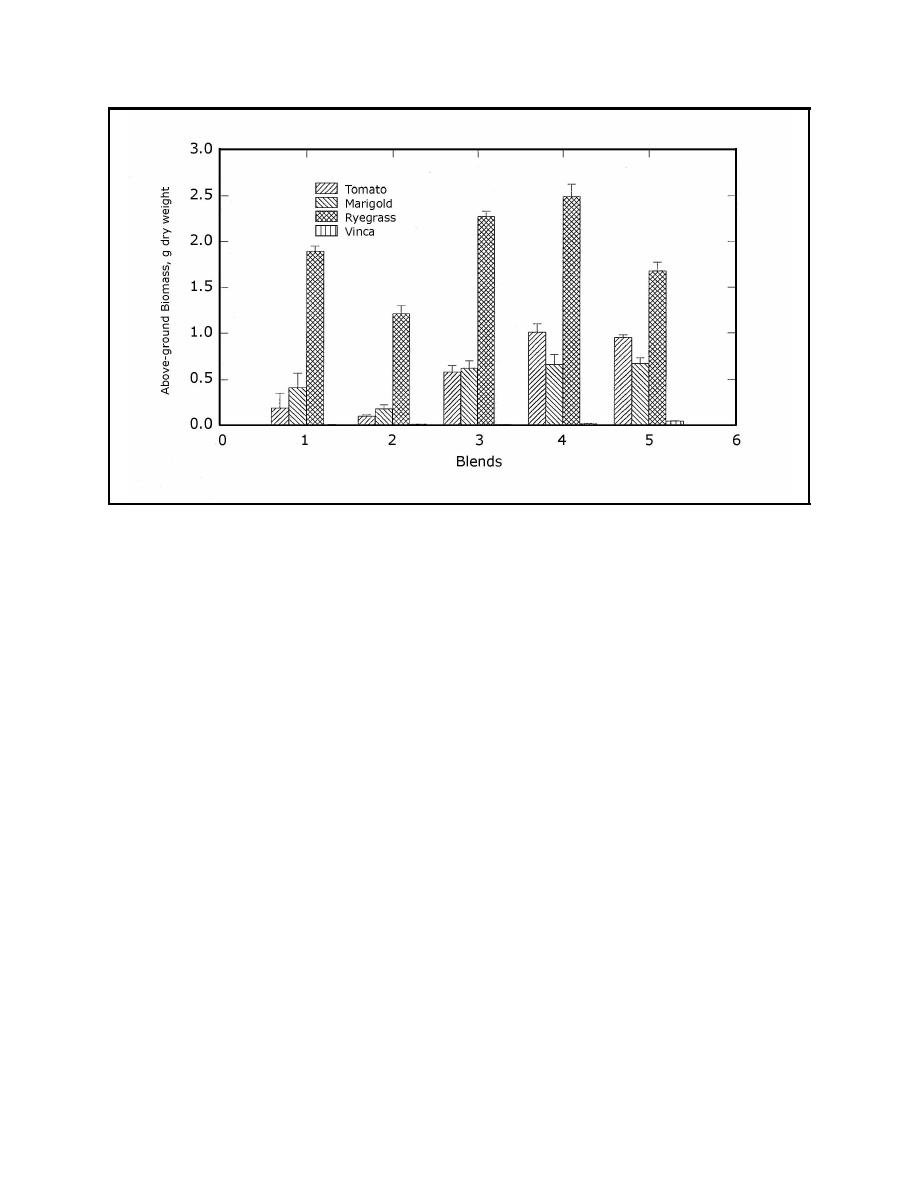 |
||
|
|
||
|
Page Title:
Figure 1. Total aboveground plant biomass collected from the various Toledo Harbor dredged-material blends |
||
| |||||||||||||||
|
|
 Technical Note DOER-C6
May 1999
Figure 1. Total aboveground plant biomass collected from the various Toledo Harbor dredged-material
blends
Differences observed in seed germination among the different blends could be due to factors
(e.g., salinity, substrate) affecting the rate and extent of water movement from the manufac-
tured soil blend to the seeds. The additional time significantly enhanced seed germination.
For example, in Blend 2 after 21 days tomato showed a 10-percent increase in seed germination;
marigold showed an increase of 16 percent; ryegrass increased 7 percent; and vinca had the largest
increase of 20 percent.
Plant Growth. Total aboveground biomass determination (quantitatively) and visual observations
(e.g., leaf color, size, and shape) are means of evaluating the fertility of the manufactured soil blend.
Though visual observations are not quantitative, they can provide useful information concerning
the blend fertility (Figures 1, 2, and 3). For example, the most easily observed symptom of nitrogen
deficiency is the yellowing (chlorosis) of leaves because of a reduced chlorophyll content. This
symptom is usually noticed first in the more mature leaves and last in the more actively growing
leaves. Under severe conditions of nitrogen deficiency, the lowermost leaves on plants will be dry
and yellow and often abscise.
Phosphorus may cause premature leaf fall and purple or red anthocyanin pigmentation. Unlike
plants lacking nitrogen, plants lacking phosphorus may develop dead necrotic areas on the leaves
and petioles; or they may have a general overall stunted appearance, and the leaves may have a
characteristic dark to blue-green coloration. Zinc and phosphorus deficiencies in a blend may cause
a distortion in the shape of leaves of some plants. Calcium affects the meristematic region of the
stem, leaf, and root tips; these areas usually die, thus terminating growth in these organs. Chlorosis
generally occurs along the margins of younger leaves. These areas usually become necrotic.
5
|
|
Privacy Statement - Press Release - Copyright Information. - Contact Us - Support Integrated Publishing |